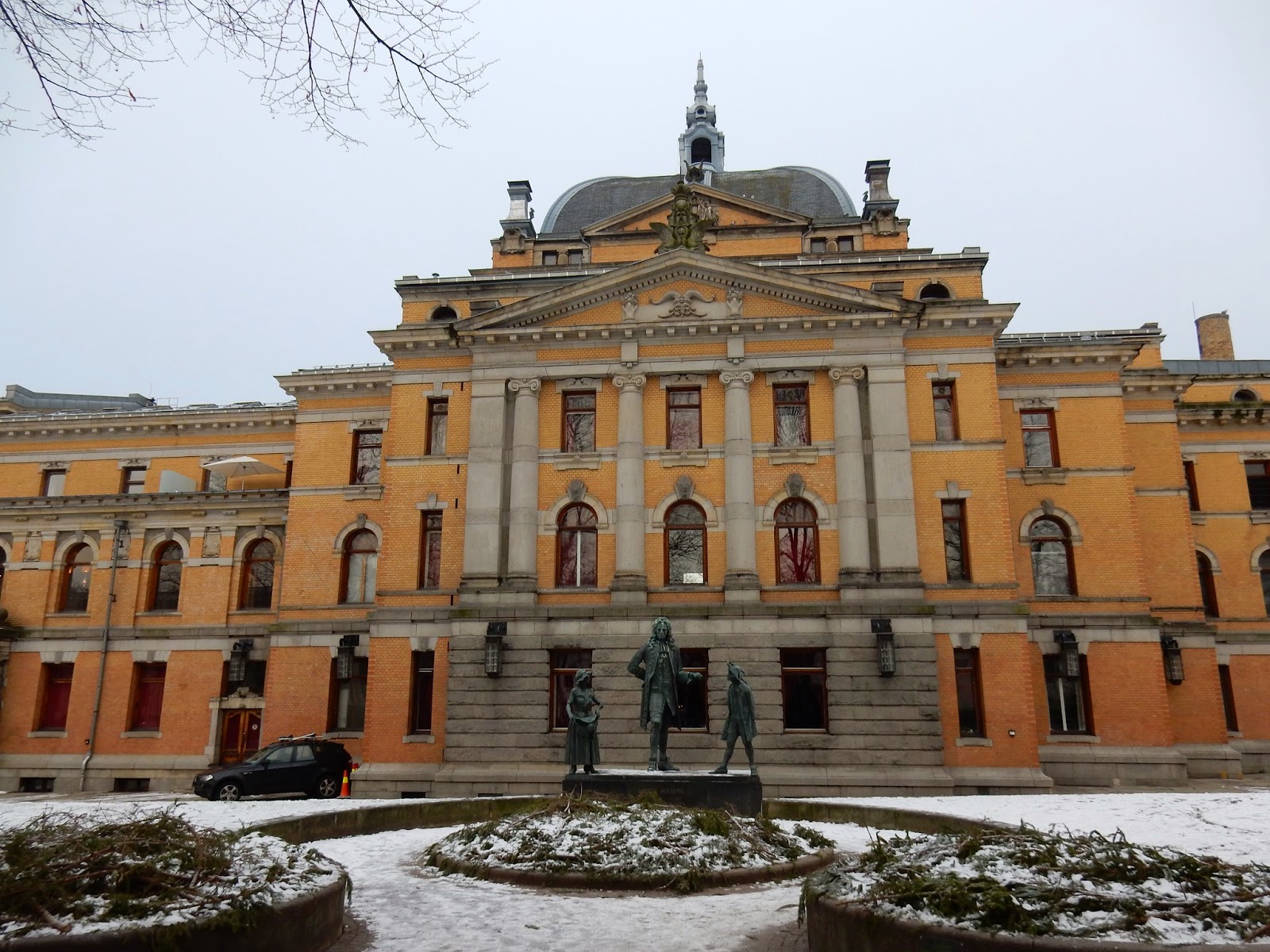Il
20-22 dicembre
Oslo,
Norway
We
arrived in Oslo in the late afternoon which gave the majority of the
group just an evening here as they would be leaving
the next day. I always enjoy having some time on my own before and/or
after an escorted tour so I had planned an additional day to walk
about this lovely capital city.
Oslo,
founded in 1000 AD, is the economic and governmental center of Norway and is also a hub for maritime trade and industry. Norway's most
populous city, it is one of the most expensive places in the world to
live, although, in the European
Cities of the Future
2012
report, it was also ranked #1 for quality of life in European large
cities.
Located
near a fjord and surrounded by hills and forests, Oslo, also Norway's
cosmopolitan center, is a very easy location to explore on foot. Its
architecture is a melange of old and new, there are plenty of museums
for learning about Norwegian history and culture, stately theaters
for music and dance, and a host of outdoor activities for the more
energetic.
The
first place I visited was the Royal Palace; surrounded by a large
park, it seems very much a palace of the people. Although there are
guards near the doors (and I would imagine security that I couldn't
see), there are no gates and many of us (plenty of children and baby
carriages) walked on the crunchy snow and took in the view below as
the palace is up on a small hill.
After strolling
the downtown pedestrian streets filled with boutiques and XMAS
shoppers, and my photographing other landmarks, I followed my map in search of the Jewish Museum about a 30
minute walk from the “pulse” of the city. Housed in a building that
was once a synagogue, I arrived to find the museum closed, as I hadn't taken into account that it was during the festival of Chanukah; nevertheless, I was grateful to have found it. Out of approximately
five million people, Norway currently has a Jewish population of about 1,000. In 1940, the country was home to 2,100 Jews, but, by the
end of the war, 1,100 had fled, primarily to Sweden, and 750 had been
deported to death camps with 34 survivors. Outside the museum, embedded
in the ground, are bronze cobblestones with the names of residents
deported to Auschwitz. These “stolpersteine”
or “stumbling blocks” also appear in other spots in the city as
well as places where Jewish victims once lived. Even though I wasn't
able to enter the museum, just being there and praying for those who
blocks I touched was humbling and a reminder that life is a precious
gift.
By
then I was cold (yes, it was about 9 degrees Fahrenheit) and yearning
for a comforting and warming drink. How lucky I was to stumble upon a
cafe where I was served the perfect cup of hot cocoa, complete with
freshly whipped cream and shaved chocolate. It was just the right ending
to a grand adventure in Norway...
















































.JPG)



